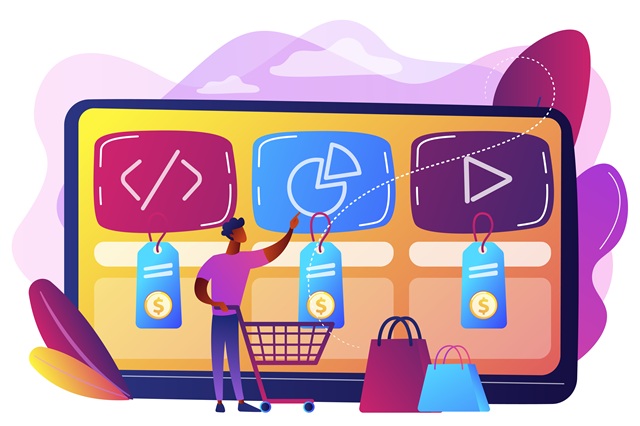
Employee experience has become a trending topic, and not only in HR. Today, companies are encouraged to become more ‘people-focused' and work on employee engagement.
In fact, while the term “employee experience” has been doing the rounds for a while, it came in the spotlight after the Great Resignation, as companies began scrambling to understand how to improve retention, especially when it came to their top talent.
Despite the growing attention it has garnered, most companies are still lacking, not only in their understanding of employee experience, but in its practice. In fact, according to Gartner, only 13% of all employees are really satisfied with their experience.
To ensure you don't become a part of the statistic, we need to deep dive into how you can transform your employee experience (EX).
What is Employee Experience?
Let's begin at square one: EX it is the sum of all experiences an employee has from the beginning to the end of their employee lifecycle with a company - from onboarding to exit.
It is often confused with employee engagement, which refers to the level of enthusiasm and dedication an employee feels towards your company. While employee engagement is a part of EX, they aren't the same thing.
In fact, employee engagement is something you often see during one-off activities organized by the HR, from parties to games. However, EX refers to the overall experience, from those early morning coffee breaks to late night collaborations when working in a team.
Employee engagement activities can give you a quick glimpse, but it isn't always accurate. That's why you need to begin looking into and measuring employee experience to better understand how your people are feeling.
Why is EX important?
Not sure why employee experience is a big deal? A great EX can make all the difference between having to scramble to fill in job roles versus having a team that's motivated and proactive in ensuring goals are met (and even superseded!)
Nurtures Loyalty:
Creating an experience employees enjoy involves listening to their goals, ambitions, and wants. It means you need to understand what they need to deliver on an experience that gets them to stay. In turn, you create a highly engaged workforce that directly drives your ROI!
Just think about it, at least 21% of millennials have changed jobs in the last year. Their reason? Purpose. They want to love the work that they do, and if they don't enjoy it where they are or feel a strong purpose, they are open to other opportunities. On the flip side, Millennials are also 22x times more likely to stay with a company if they build trust and engagement into their workplace culture.
Improves Productivity:
Did you know that engaged employees put 57% more effort into their work? However, the best way to ensure consistent employee engagement is with a great overall EX. These are the high performers you're looking for, and this is the attitude most companies hope to cultivate.
But how do companies create this attitude amongst their employees? It's simple - focus on them and their needs, the same way you would when looking to cater to customers.
Research shows that creating an employee-oriented culture where employers provide holistic support for their employees see the number of high-performers increase by 21%!
Better ROI:
Investing in employee welfare not only saves you the money to replace an employee, but also improves your bottom line. How?
More engaged employees aren't only more productive and engaged, but they also take ownership of every task that comes their way. This does so much more than improving the company culture to create true collaboration - it improves to the customer experience!
And here's the kicker - a long-term Glassdoor study showed that companies which were consistently deemed the “best place to work” by their employees outperformed the stock market!
3 Key Factors to Enhance Your Employee Experience
The importance of employee experience is irrefutable. However, to create a strong employee experience that enables you to reap the above-mentioned benefits, here are some things you simply must have:
1. Trust:
At the heart of a good employee experience is honesty and trust. After all, to truly deliver a great employee experience, you must first understand the experience gaps that exist.
The best way to get the most accurate answers is to ask your employees. However, without trust, you might not get honest answers. When employees are concerned about repercussions, they'll be hesitant to be candid.
So, begin by being transparent about the purpose and your goals. Implement anonymous surveys and feedback options that ensure that employees are protected for their honesty. And strive to ensure a communicative workplace atmosphere. When you regularly ask employees for their feedback and take action on their concerns, you encourage them to tell you more - and build trust.
2. An “Employee-First” Attitude:
You get what you give. By creating a workplace that values employee wellbeing, you'll inadvertently nurture a team of loyal employees who value and work towards company goals.
So, focus on giving employees what they're asking for to be productive. From ensuring a work-life balance, incorporating remote working options, to helping them attain their professional goals - you need to ask the team “what do you need?” And “what more can the company do?”
This helps employees feel valued, cared for, and safe in the organization as they focus on delivering their best in every task at hand. While everything might not be possible, taking efforts shows them that this is a company that looks out for them as well, nurturing loyalty and improving productivity in the long run.
3. Respect:
Being employee-first doesn't only mean doing things for your employees, but also showing them respect.
So, empower your employees to do more by respecting everything that they bring to the table, ideas, opinions, and time.
Take their ideas into consideration - encouraging them to bring new concepts to the table - after all, you never know when something clicks!
Listen to their opinions - when you have employees who are invested in the company's success, they are going to have opinions that may be different than yours. But the goals are the same. So, understand why they feel that way and work (where possible) to take those concerns under consideration.
Value their time - this isn't just limited to respecting work-life boundaries, but also understanding that their time is valuable. This means asking yourself, “is that meeting really necessary, or can it be an email?”
Get Started on Transforming Your Employee Experience
At the root of a great employee experience program is identifying the needs of your organization and people. So, get started by collecting the data you need to ideate strategies that fill the employee experience gap.
Experience management solutions like SogoEX can help you understand your employee pulse as you view key engagement drivers to help you identify the strengths and weaknesses of your program.
Tags:
Image Credits: Freepik








